From Camelot to Tamriel With Matt Firor
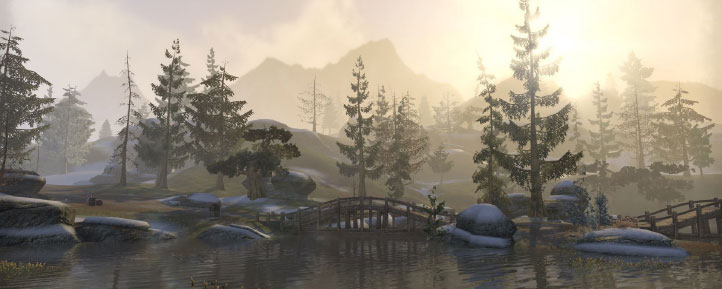
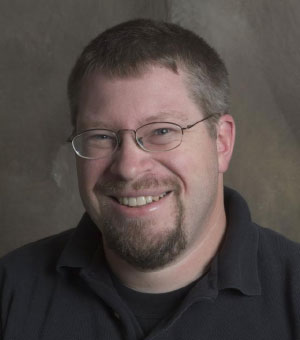 Matt Firor has been a key player in the world of Massively Multiplayer games since the beginning. Many of you know his latest project with ZeniMax Online’s “The Elder Scrolls Online”, but his story began long ago.
Matt Firor has been a key player in the world of Massively Multiplayer games since the beginning. Many of you know his latest project with ZeniMax Online’s “The Elder Scrolls Online”, but his story began long ago.
In 1990 Matt co-founded Interesting Systems (ISI) with Rob Denton and two others. He was the co-designer and lead content developer for ISI’s multi-user BBS game Tempest (later renamed Darkness Falls). This would later be merged with Adventures Unlimited Software to form Mythic Entertainment in 1995.
Matt worked with Mythic Entertainment to produce the groundbreaking title and birthplace of the Gaiscioch, Dark Ages of Camelot. It was the first game to deploy large scale siege warfare on a three realm front and was set in the Camelot folklore.
In 2006, he parted ways with Mythic Entertainment and later resurfaced in 2007 at the helm of ZeniMax Online Studios. His latest project is our very own home for chapter 5, The Elder Scrolls Online. It’s rare that you get the chance to sit down and speak with someone who has been a part of creating the worlds your community calls home. Matt Firor had his hand in creating the game that gave birth to the Gaiscioch Family and also in our current chapter in The Elder Scrolls Online. 12 Years of gaming and Firor has been a part of the majority of them.
Today I get the opportunity to ask him a few questions about his journey from BBS to The Elder Scrolls Online. Who better to share his story than one with such a successful history in MMORPG gaming.
Thank you Matt for joining me today to answer a few burning questions. The first of which, I have to ask, Did you ever imagine that the BBS style game would evolve into the MMO’s we have today?
Matt Firor (MF): I don’t think back in the late 80’s I could have envisioned what modern games have evolved into – but the basics are still very similar. Players connected over a network, experiencing the same game world together, working with each other – and in some cases, fighting against one another. Even though it was text back then, and high-res 3D graphics now, the principles are the same.
Can you tell us about the founding of ISI? What inspired you and Rob to create Tempest?
MF: Way back when, in the mid-1980’s, there was a multi-user BBS game called “Scepter of Goth” that I played with some friends in the Washington, DC area. You dialed in, the server had 10 or so modems attached to it, so you could play with up to 9 others at the same time. There was a standard message board attached to it, so while playing you could chat with other players, and leave message for those who were offline. It was what would now be called a MUD, although I’m not sure if it was part of the official MUD code base. Scepter was licensed around the US by a company, so there was the Washington-based server, and then others in other parts of the States. Interesting to note: you paid $5.00/hour – if memory serves me correct – to play this game, so it got expensive, very quickly.
So, some friends and I – including Rob, who I met while playing Scepter – decided to license the game ourselves and set up a Scepter server in Atlanta, where another friend of ours, Don Campbell, was going to college at Georgia Tech. We licensed our server, set it up at Rob’s house, and spent a few months developing our own game world while we worked with the licensing company to set up the modems and server location we’d need in Atlanta.
Sadly, the Atlanta version of Scepter never materialized, as the company we licensed the game from went out of business soon thereafter. But, this energized us to start working on our own game, written from the ground up, so we wouldn’t have to rely on outside partners. In full ignorance of MUDs (I didn’t even hear that term until 5 years after this), we sat down and started coding and designing a game and (text based) virtual world. That game was Tempest (although it was renamed Darkness Falls a few years later), and it became the core code base for many of Mythic’s games, including Dark Age of Camelot.
At what point did you realize you were sitting on a game changer that would change the face of gaming for generations to come?
MF: I don’t think I really ever have. We were just trying to make a game that we wanted to play. If you ever realize that you are “changing the face” of anything, then you’re probably over thinking it. The goal is always to make a great game.
Let’s talk about Dark Age of Camelot, one of my personal favorite games and the game that changed my mind about MMO’s. What inspired Mythic Entertainment to create a game set in this fantasy time period? There are so many other places you could have set this adventure.
Why Camelot?
MF: Because Arthurian legends (and Viking mythology and Celtic legends) are all in the public domain. We had no money, so we couldn’t base the game on any recognized IP that we would have to license, so Mark Jacobs, Mythic’s President, came up with the idea of King Arthur and Camelot – known worldwide, and perfectly free to use. It was genius.
Do you have any favorite memories about the early days of Camelot and Mythic that you would care to share?
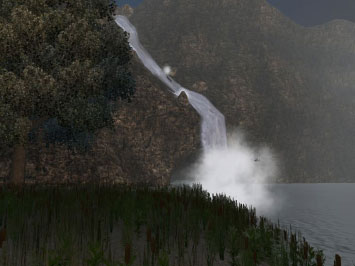 MF: How sad that I answer this question on the very day that I found out the studio was shutting down. It is a sad day, I have so many memories of Mythic. Of course I have many, many fond memories of that time. What most people who only know about Mythic through Dark Age of Camelot don’t realize is that Camelot was Mythic’s 12th or 13th game (I forget) – we had made at least a couple games a year for six years by that point. We did a run of movie-licensed online shooters (Godzilla Online, Aliens Online, Independence Day Online, Starship Troopers), and a really good top-down spaceship combat game called Silent Death Online.
MF: How sad that I answer this question on the very day that I found out the studio was shutting down. It is a sad day, I have so many memories of Mythic. Of course I have many, many fond memories of that time. What most people who only know about Mythic through Dark Age of Camelot don’t realize is that Camelot was Mythic’s 12th or 13th game (I forget) – we had made at least a couple games a year for six years by that point. We did a run of movie-licensed online shooters (Godzilla Online, Aliens Online, Independence Day Online, Starship Troopers), and a really good top-down spaceship combat game called Silent Death Online.
One fun fact: Until very late in beta, the Dark Age of Camelot’s title theme was the Monty Python and the Holy Grail theme. Anyone who played in early betas will remember this.
I have to ask, which was your realm? Hibernia, Midgard, or Albion?
MF: The first Realm we worked on was (obviously) Albion, so most of my development memories are of those areas as the game was in its formative stages. But my main character was a Midgard Warrior, for reasons unclear to me at this point – probably that’s where most of my guild was playing at the time, and I stuck with it.
Since Camelot, many studios have played their hand at duplicating that RvR feeling you introduced. None have managed to duplicate it until now. What is it that makes the 3 realm siege war so successful?
MF: In a 1v1 fight, any population imbalance (even one or two percent) is a big imbalance. With 3-way PvP, the balance is more forgiving, because it is much harder (although still possible) for one side to totally dominate.
Between your time at Mythic Entertainment and ZeniMax Online Studios I understand you formed Ultra Mega Games which focused on consulting. In that year, were you already thinking up new ideas for the next best thing? What ambitions drove you to keep you fresh and in the game?
MF: I consulted for just over a year in between game development jobs, but mostly I was gathering info for my clients and taking some much needed time off with the family. I think of it more as a time to recharge than anything else.
Funny enough, since I first played Morrowind I always imagined an Elder Scrolls MMO would be phenomenal. Now I have my hands on it and I have to say it’s surpassed even what I could imagine. What was that first day with ZeniMax like? Did they just drop it in your lap and say make it happen? How did Elder Scrolls Online come to be?
MF: The plan all along was to make an Elder Scrolls MMOG – that was what we talked about from our earliest conversations. I spent a lot of time in the early days of the project working with the guys at Bethesda to make sure that the timeline for the game was set, the general setup of the Alliance War was approved, and the main story (centered around Molag Bal) was ok with everyone.
So now you have a project, you have a goal, you need to staff your company with the best talent. Did you already have people in mind for the roles or was it a traditional recruiting process?
MF: I’ve been in the industry so long that there were many different developers on my mind when I started the project – some I was successful in recruiting and some I wasn’t, which is normal. The game industry – and especially the MMOG industry – is so small that almost everyone knows everyone else.
I must say you’ve built an amazingly talented team and an even more amazing product. What’s next on the agenda? We’ve launched, begun finding those pesky post launch bugs, and can start looking to the future. What are the short and long term goals that your team is looking at?
MF: Our goals are clear: keep adding regular content and features to the PC game while fixing imbalances and adding polish. At the same time get the console versions done.
So be honest, you took on a product with a 13 year history. I imagine that would be quite the frightening task. Living up to years worth of fan base buildup has got to be quite a challenge. Over the next 7 years you’d see the successful life of Oblivion and Skyrim raising that bar even higher. Were you ever worried you wouldn’t do the Elder Scrolls justice?
MF: Working with an IP of the caliber of The Elder Scrolls comes with the pressure of making sure that you deliver a product that matches the IP. We worked long and had to make ESO a great Elder Scrolls game – but one that you can play with your friends (and enemies).
You have a phenomenal knack for making mind blowing games that revolutionize the MMO scene. With Elder Scrolls Online you brought back Siege War with AvA, introduced mainstream Megaservers, and perfected the Multi-Guild Gaming. Other games have tried to master these areas but often times fall short. Do you still find yourself leaning on your past experiences to help shape your future ideas? At what point does your ambition to innovate get toned down by your knowledge of player needs? How do you keep the balance to remain fresh and relevant?
MF: Every project starts with blue-sky ideas, most of which meet the cold reality of timelines and feasibility – but definitely we had the idea with ESO to bring a new server experience by removing the need for players to select a server before they started playing. Being able to have friends across the entire userbase of one megasever is pretty cool, and that led to being able to be a member of multiple guilds, etc. Between that and ESO’s return to “classic” three-way PvP, we’re really happy with the way that those large systems came together.
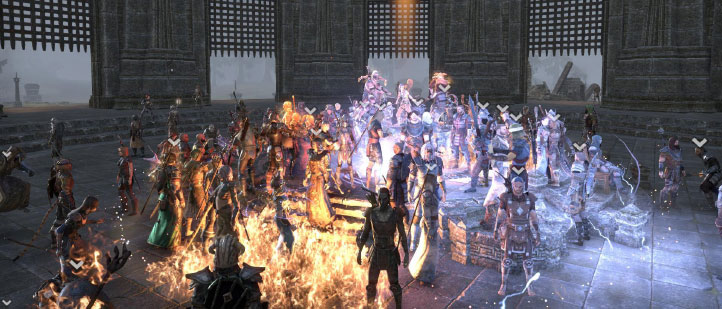
Over the years MMORPGs have changed quite drastically. In Camelot we didn’t have quest icons telling us where to go. Today almost every game produced requires developers to hand hold players and show them the way. Are we as gamers becoming so lazy that we require these things or is it a natural progression of streamlining products to maximize efficiency and time usage?
MF: That is a great question. There is a delicate balance between player autonomy and too much information – players are now very much used to on-screen indications to direct them where they should be going. We’re now at the point where a game that doesn’t have direction indicators of some type feels like its missing something.
I have to admit, I do miss the days when I would get lost in the wilderness looking for a location for that named creature. Elder Scrolls Online seems to have tried to rekindle that experience by removing the Minimap and making players rely on a compass to tell them where to go. What was the inspiration behind removing mini-maps and x/y locations from the traditional style MMO?
MF: Exactly what you said – we had a minimap in the game initially, but it just felt too easy to find things in the game. We experimented with the compass, and decided it was a much better feel. Part of the joy of ESO is the journey – exploring, wandering around, and if you have a minimap that shows you everything all the time, it just takes away from that feeling.
Are there any exciting features currently lined up for launch this fall you can share with us? We know the world will be continuously growing with new and fresh content is there any hints you can share as to what’s in store for us?
MF: We’ve already publicly discussed the features we’re working on, so there’s nothing really new to add to the list – but we are very excited about having regular updates to the game. One of the huge advantages of games like ESO is how they expand and get better after launch. We have a new Road Ahead article going up this week in which we’ll talk about some of our future plans – keep an eye out for it.
What do you see for the future of the MMO industry? You’ve been there at the birth, and are here at its destination, where do you see MMOs taking us in the future?
MF: People always want to play great games, and I think if developers concentrate on that, then all the questions answer themselves. There’s going to be inevitable evolution – new devices, new horsepower, etc. – but the basics of game design and virtual world design will always drive how online games are made.
Thank you so much for taking the time to sit down and talk with me. It has truly been a journey none of us will likely forget. I look forward to our future with Elder Scrolls Online and the continued success of ZeniMax Online.

About the Author
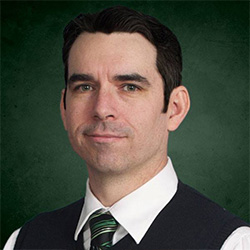
Foghladha
Managing Editor
Foghladha founded the Gaiscioch Social Gaming Community in 2001 and has since been the founder & activities director for this well known community. His role has gone beyond just running the Gaming Community and now includes running the Athletics Program in Portland, Oregon, as well as acting as the Managing Editor of the Gaiscioch Magazine, and is the Lead Producer on the Gaiscioch Livestream Productions. Additionally he networks with game developers to form relationships between Gaiscioch and development studios.
His experience in publishing dates back to helping his Grandparents who operated a printing press for over 40 years. In high school and college Benjamin excelled in journalism and played an active part in the school newspaper. Foghladha currently works full time as the director of technology for a franchise trade publication & education company.
